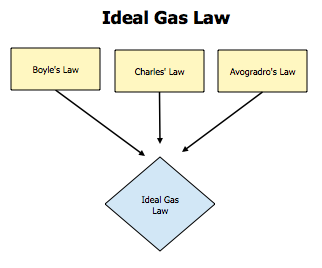The Ideal Gas is an instance wherein collisions between atoms or molecules are perfectly elastic but there are no intermolecular forces involved. You can visualize it rather as a collection of colliding balls but do not interact with each other in some way. Therefore, in such a gas, all the contained energy is in the form of kinetic energy which is affected by changes in temperature. The ideal gas is widely affected by these three variables: absolute pressure (P), volume (V) and absolute temperature.

In mathematical terms, the Ideal Gas Law is expressed as PV=nRT=NkT.
- P = Absolute Pressure
- V = Volume (in Liters)
- n= Moles or Number or gas Particles
- N = Number of Molecules
- k = Boltzmann’s Constant or 1.38·10−23 J·K−1
- T = Temperature (in Kelvin)
- R = Universal Gas Constant or 3145 J/mol K
An ideal gas is determined by its negligible-sized molecules that have an average molar kinetic energy that only depends on temperature. The Ideal Gas Law, however, applies best to mono-atomic gases that are subject to low pressure and high temperature. Lower pressure is somewhat the best condition because the average distance of molecules from each other is much greater than its size. As the temperature increases, the kinetic energy of the molecules also increase, making the effect of intermolecular attraction less significant.
In order to make things short, the lower the pressure, the gas molecules are farther apart from each other. And if the temperature variable is added, the gas molecules become more active, therefore giving off more energy.
